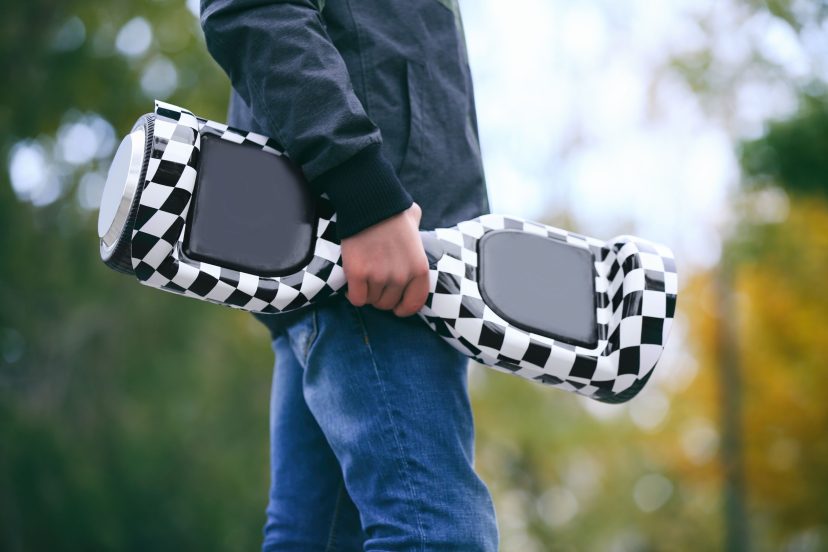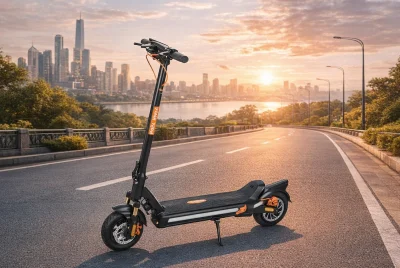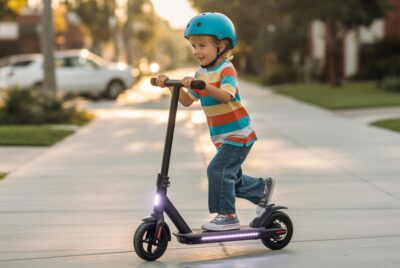How Long Does It Take for a Hoverboard to Charge?
*We may earn a commission for purchases made using our links. Please see our disclosure to learn more.
As a dedicated hoverboard enthusiast, I’ve seen the world of personal transportation evolve rapidly over the years. From their futuristic design to the thrill of gliding effortlessly, hoverboards have captured the hearts of many riders. However, one common question that often arises is, “How long does it take for a hoverboard to charge?” In this article, I’m going to delve into the intricacies of hoverboard charging, sharing my knowledge and personal experiences to provide you with a comprehensive understanding of this crucial aspect of hoverboard ownership.
The Basics of Hoverboard Charging
Before we dive into the specifics of charging times, let’s start with the basics. To comprehend how long it takes to charge a hoverboard, it’s essential to understand the key components involved. A typical hoverboard is equipped with a lithium-ion battery, a charger, and a charging port. The battery is the powerhouse of your hoverboard, responsible for storing and delivering the energy needed for your rides.
The quality of your charger plays a significant role in determining charging times. Cheap or low-quality chargers may not provide a consistent flow of electricity, leading to longer charging periods and potential damage to the battery. Always ensure you’re using a charger specifically designed for your hoverboard model.
Charging Time Variability
Hoverboard charging times are not set in stone; they can vary depending on several factors. Here are some key elements that can influence how long it takes to charge your hoverboard:
Battery Capacity and Type
Hoverboards come with varying battery capacities, usually measured in watt-hours (Wh) or ampere-hours (Ah). The larger the battery capacity, the longer it generally takes to charge. For instance, a hoverboard with a 36V 4.4Ah battery will typically charge faster than one with a 36V 10.4Ah battery.
Charger Quality and Amperage
As mentioned earlier, the charger quality matters. Chargers with higher amperage ratings can provide a faster charging experience. A 2A charger will charge your hoverboard more swiftly than a 1A charger, all else being equal.
Standard Charging Time for Hoverboards
Now that we understand the variables at play, let’s discuss the standard charging time you can expect for your hoverboard. On average, most hoverboards take around 2 to 3 hours to fully charge from an empty battery. However, this is a general guideline, and the actual time may vary.
Different hoverboard models may have varying battery sizes and charger specifications, so it’s crucial to consult your user manual or manufacturer for precise information about your specific model.
Quick Charging vs. Slow Charging
In the world of hoverboards, there’s a choice to make when it comes to charging: quick charging or slow charging. Quick charging involves using a charger with higher amperage, which can significantly reduce the charging time. However, there’s a trade-off. Quick charging may generate more heat, potentially shortening the lifespan of your battery in the long run.
On the other hand, slow charging with a lower amperage charger is gentler on your battery and may extend its overall lifespan. It’s like the difference between sprinting and jogging. While sprinting may get you to your destination faster, jogging is less taxing on your body.
So, the choice between quick and slow charging depends on your priorities: do you want a faster charge or a longer battery lifespan? Consider your needs and preferences when deciding which approach to take.
How to Charge Your Hoverboard
Now that you’re familiar with the charging basics, let’s go through the step-by-step process of charging your hoverboard:
- Turn Off Your Hoverboard: Before plugging it in, make sure your hoverboard is powered off.
- Locate the Charging Port: Find the charging port on your hoverboard. It’s usually located near the wheels or on the bottom side.
- Connect the Charger: Carefully insert the charger plug into the charging port. Ensure it fits snugly and securely.
- Plug into a Power Source: Connect the other end of the charger to a standard electrical outlet. Make sure the outlet is in good condition and can provide a stable power supply.
- Monitor the Charging Process: Keep an eye on the hoverboard while it’s charging. Most hoverboards have LED indicators that will show the charging progress. It’s crucial not to overcharge your hoverboard, so unplug it once it’s fully charged.
- Store Safely: Once your hoverboard is fully charged, unplug it from the charger and store it in a safe, dry place.
Monitoring the Charging Progress
While your hoverboard is charging, it’s essential to be aware of the signs that indicate its charging status. Most hoverboards have LED indicators that change color or flash to show the progress. Typically, these indicators will turn green when the battery is fully charged.
Additionally, some hoverboards may emit a beep or other audible cues when they’re fully charged. Pay attention to these signals to prevent overcharging, which can be detrimental to your battery’s health.
Troubleshooting Charging Issues
Sometimes, you might encounter problems while trying to charge your hoverboard. If your hoverboard doesn’t charge as expected, here are some common issues and their solutions:
- Charger Compatibility: Ensure that you’re using the correct charger for your hoverboard model. Using an incompatible charger can lead to charging problems.
- Faulty Charging Port: If the charging port on your hoverboard is damaged or malfunctioning, it may not charge correctly. In such cases, seek professional repair services.
- Battery Health: If your hoverboard’s battery is old or damaged, it may not hold a charge properly. Replacing the battery might be necessary.
- Electrical Outlet Issues: Sometimes, the problem may not be with your hoverboard but with the electrical outlet. Test the outlet with other devices to confirm it’s functioning correctly.
- Software or Firmware Updates: Some hoverboard models may require software or firmware updates to address charging issues. Check with the manufacturer for any available updates.
Battery Maintenance Tips
Taking care of your hoverboard’s battery is crucial to ensure longevity and consistent performance. Here are some tips to help you maintain your battery:
- Regularly Charge and Discharge: Avoid leaving your hoverboard’s battery at low or high charge levels for extended periods. Charge it regularly and discharge it partially to keep it in good condition.
- Store Properly: If you’re not using your hoverboard for an extended period, store it in a cool, dry place with a charge level between 30% and 50%.
- Avoid Extreme Temperatures: Extreme heat or cold can harm your battery. Avoid exposing your hoverboard to extreme temperature conditions.
- Read the Manual: Always refer to your hoverboard’s user manual for specific maintenance guidelines provided by the manufacturer.
The Future of Hoverboard Charging
As technology continues to advance, so does the world of hoverboards. Innovations in charging technology are on the horizon. We can anticipate faster and more efficient charging methods, as well as improved battery life.
Moreover, eco-friendly charging options are gaining traction. Solar-powered chargers and regenerative braking systems are being explored to reduce the environmental impact of hoverboard charging. In the coming years, we may see a shift towards sustainable energy sources for personal transportation devices like hoverboards.
Eco-Friendly Charging Options
If you’re environmentally conscious, you might be interested in exploring eco-friendly charging options for your hoverboard. Solar-powered chargers are a promising solution. These chargers harness the power of the sun to charge your hoverboard, reducing your reliance on traditional electricity sources. By opting for solar charging, you can play a part in reducing your carbon footprint.
Safety Concerns
While we’ve covered the joy of hoverboarding and the convenience of charging, it’s essential to address safety concerns. Hoverboard fires have been reported in the past, often due to faulty batteries or chargers. To ensure your safety:
- Buy from Reputable Brands: Invest in hoverboards from well-established brands that prioritize safety and quality.
- Look for UL Certification: Check if your hoverboard charger and battery have UL (Underwriters Laboratories) certification. This certification indicates that the product has met stringent safety standards.
- Follow Charging Guidelines: Always adhere to the manufacturer’s charging guidelines and safety recommendations to reduce the risk of accidents.
Charging for Different Hoverboard Models
It’s important to note that charging times and methods can vary among different hoverboard brands and models. Some may come with proprietary chargers, while others use standard connectors. Be sure to read the user manual that comes with your hoverboard to understand the specific charging requirements and compatibility.
In some cases, you might need an adapter to charge your hoverboard if you’re traveling internationally. Make sure to check the voltage compatibility and use the appropriate adapter to prevent any damage to your device.
Real-Life Charging Experiences
As a fellow hoverboard enthusiast, I’ve had my fair share of charging experiences. I’ve learned valuable lessons from my own journeys and those of the hoverboard community. While the average charging time falls within the 2 to 3-hour range, it’s essential to be patient and prioritize safety over speed.
Remember, hoverboarding is not just about reaching your destination; it’s about enjoying the ride and the freedom it brings. Take the time to charge your hoverboard properly, and it will reward you with countless hours of fun and adventure.
Conclusion
In conclusion, the question of how long it takes to charge a hoverboard is not a one-size-fits-all answer. Charging times can vary based on factors like battery capacity, charger quality, and amperage. As a hoverboard enthusiast, I encourage you to prioritize safety and battery health while charging your beloved ride.
Whether you opt for quick charging to hit the road faster or choose a slower, gentler approach to extend your battery’s life, the choice is yours. Just remember to follow the manufacturer’s guidelines, monitor the charging progress, and invest in quality chargers and batteries.
The future of hoverboard charging holds exciting possibilities, with innovations and eco-friendly options on the horizon. As you embark on your hoverboarding adventures, keep safety at the forefront and enjoy the ride to the fullest.
FAQs (Frequently Asked Questions)
Q1. Can I leave my hoverboard charging overnight?
It’s generally not recommended to leave your hoverboard charging overnight as it can lead to overcharging, which may damage the battery. It’s safer to charge it during the day when you can monitor the progress.
Q2. How do I know when my hoverboard is fully charged?
Most hoverboards have LED indicators that turn green when the battery is fully charged. Some models may also emit a beep or other audible signal.
Q3. Can I use a different charger for my hoverboard if I lose the original one?
Using a charger that is not specifically designed for your hoverboard model can be risky. It’s best to contact the manufacturer or find a compatible replacement charger.
Q4. How often should I charge my hoverboard?
It’s a good practice to charge your hoverboard regularly, even if you don’t use it often, to keep the battery in good condition. Partial discharges and charges are recommended to prevent overcharging and deep discharging.
Q5. Are solar-powered chargers efficient for hoverboards?
Solar-powered chargers can be efficient, but their effectiveness depends on the amount of sunlight available. They are a sustainable option but may not provide rapid charging in cloudy or low-light conditions.




